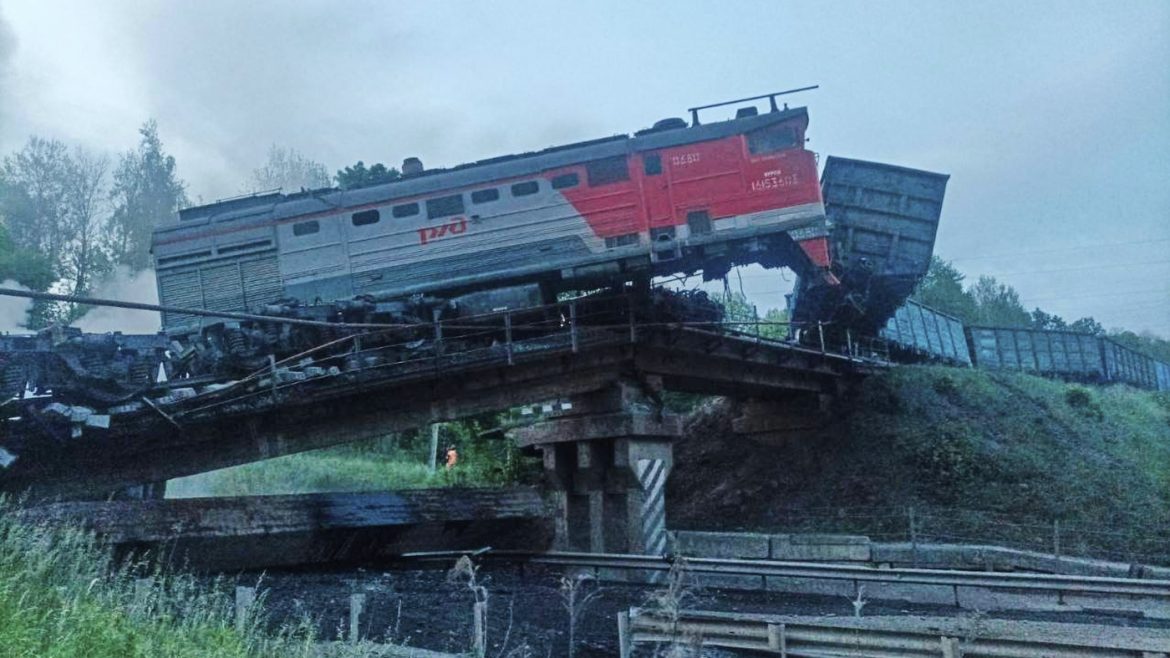Explosive Bridge Collapses in Russian Border Regions: Tragic Impact and Broader Implications
Recent events along Russia’s western border have thrust the region into a crisis marked by violence and infrastructure destruction. At least seven people have died, and dozens more have been injured, following the collapse of two critical bridges caused by explosions. These incidents not only highlight immediate human and logistical costs but also raise questions about the broader geopolitical tensions fueling such attacks.
The Incident Details: Casualties and Damage
The collapses occurred in separate Russian regions bordering Ukraine, notably including the Bryansk region. Reports consistently confirm that seven fatalities resulted from these explosions, while injury counts vary slightly between sources, ranging from 66 to 76 individuals. Both road and railway bridges were affected, leading to significant train derailments and widespread disruption to transportation networks.
The timing of these blasts—overnight and close together—suggests coordinated action. The destruction of these transportation nodes cripples regional mobility, impacting both civilian travel and supply chains. The resulting chaos from derailments and bridge failures further compounds emergency response challenges.
Strategic and Symbolic Significance of the Bridges
Bridges often serve as critical arteries in regional infrastructure, facilitating commerce, communication, and military logistics. The targeted destruction in border areas adjacent to Ukraine implies strategic motives likely tied to the ongoing, complex conflicts involving Russia and Ukraine. Disabling transport links can serve multiple tactical purposes: hampering military movements, disrupting supply routes, and sending symbolic messages to opposing forces.
These attacks may reflect escalations in hostilities or represent sabotage efforts aimed at undermining Russia’s regional control. Given the proximity to an active conflict zone, infrastructure sabotage underscores the broader precariousness faced by civilian populations and the entangled nature of warfare and daily life in borderlands.
Human Impact and Emergency Response Challenges
The loss of life and injuries highlight the human cost behind such incidents. Civilians, train passengers, and possibly local workers became unintended victims of these violent acts. The chaos following the bridge collapses necessitates rapid medical response, search and rescue operations, and crisis management under challenging conditions.
Injured individuals requiring urgent care stress local healthcare capacities, while the destruction limits access routes for emergency responders. Furthermore, the psychological toll on communities living near conflict zones exacerbates fears and uncertainties about safety and stability.
Broader Geopolitical Implications
These events unfold within the broader context of the Russia-Ukraine conflict, where infrastructure and territorial control are frequently contested domains. The bridge explosions signal ongoing volatility and the potential for increased asymmetrical tactics, such as sabotage and acts aimed at disrupting logistical capabilities rather than direct military engagement.
International observers and governments may perceive these attacks as indicators of intensifying conflict or desperation tactics, affecting diplomatic engagements and conflict resolution efforts. The destruction also fuels propaganda narratives on both sides, with each party attributing blame and framing the incidents to justify further actions.
Reconstructing Trust and Infrastructure Moving Forward
Restoring transportation infrastructure is vital for regional stability, economic recovery, and civilian safety. Reconstruction efforts will demand significant financial resources, logistical planning, and security guarantees to prevent recurrence. Authorities face the dual challenge of speeding up repairs while safeguarding against future sabotage.
Community resilience and international cooperation may play important roles in healing the physical and psychological wounds left by these attacks. Transparent communication, aid to affected families, and inclusive rebuilding strategies can help restore a sense of normalcy amid ongoing geopolitical uncertainties.
Conclusion: A Tragic Reminder of Conflict’s Reach
The bridge explosions in Russian regions bordering Ukraine serve as a tragic illustration of how conflict transcends battlefields, directly affecting civilian infrastructure and lives. The deaths and injuries underscore the human cost of geopolitical strife, while the destruction of vital transport links highlights the strategic complexities of modern warfare. As the conflict dynamic continues to evolve, these incidents remind us of the fragile intersections between security, infrastructure, and human lives in volatile border zones.


